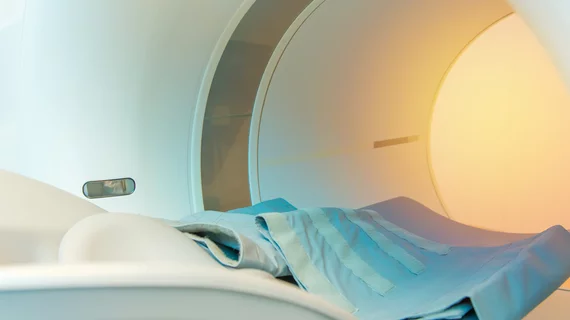18 fluorodeoxyglucose (FDG) PET/CT imaging can help predict outcomes of patients who have been newly diagnosed with multiple myeloma, according to a study published in the American Journal of Roentgenology.
Lead researcher Yoshiaki Abe, MD, of Kameda Medical Center in Kamogawa, Chiba, Japan, and colleagues designed their study to explore the prevalence and prognostic relevance of medullary abnormalities of the appendicular skeleton (AS) depicted by PET-CT in patients with multiple myeloma. A total of 232 consecutive patients with newly diagnosed multiple myeloma who had been evaluated with pretreatment whole-body FDG PET-CT and treated with novel agents at Kameda Medical Center between April 2008 and February 2018 were retrospectively identified.
The final study cohort included 228 patients. On pre-treatment PET-CT, 157 (68.9%) had no AS focal lesions, 33 (14.5%) had one to three AS focal lesions, and 38 (16.7%) had more than three AS focal lesions. Patients with more than three focal lesions of the AS were discovered to have “significantly shorter” progression-free survival and overall survival than those with fewer lesions.
Multivariate analysis showed that the presence of focal lesions detected using pre-treatment PET-CT remained prognostic of “significantly shorter” progression-free survival, as well as prognostic of “significantly shorter” overall survival. This was true even among patients with established high-risk parameters, such as high-risk cytogenic abnormalities, advanced disease state and established high-risk PET-CT findings.
Based on these findings, the researchers deemed the presence of more than three focal lesions in the AS on pretreatment PET-CT “an independent predictor of poor survival in patients with newly diagnosed multiple myeloma.” Surprisingly, they stated in the study, this finding “discriminated patients with shorter survival from among those with established high-risk factors.” Evaluation of findings in the AS, they wrote, has the potential to complement and improve the potential of known stratification systems, as well as PET-CT, to predict survival rates for newly diagnosed multiple myeloma patients.
The authors also cited several limitations of the study, including its retrospective nature and focus on heterogeneous treatments. Other limitations included the fact that the research had been conducted at a single institution without validation in independent cohorts, did not cover the lower legs and involved older patients. Because medullary abnormalities typically appear in the proximal bones, the researchers noted, they deemed it reasonable to analyze the field limited to the mid-thigh. Using older patients in the real-world cohort may also have increased the number of patients in more advanced disease stages, they added.
“In conclusion,” however, “we found that the presence of more than three AS focal lesions detected with pretreatment FDG PET-CT was an independent prognostic predicator,” the researchers wrote. AS PET-CT findings may facilitate the identification of exceptionally high-risk patients from among those with high-risk factors indicated by known clinical parameters; thus, they may improve the prognostic performance of known stratification systems as well as PET-CT.”
